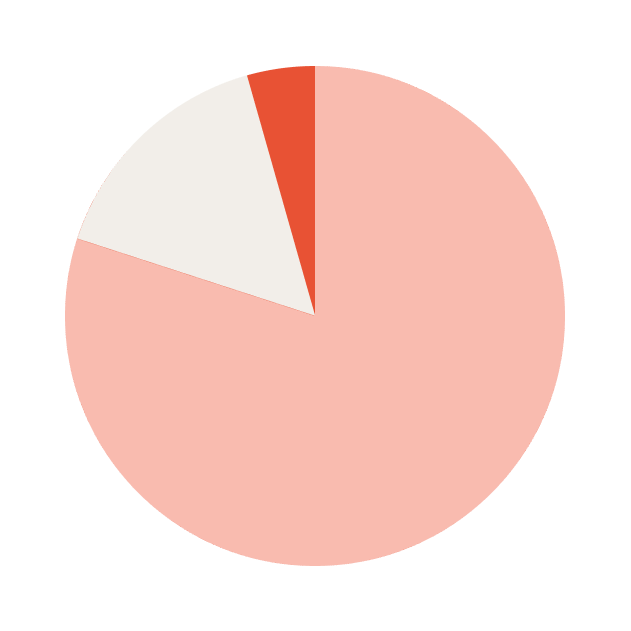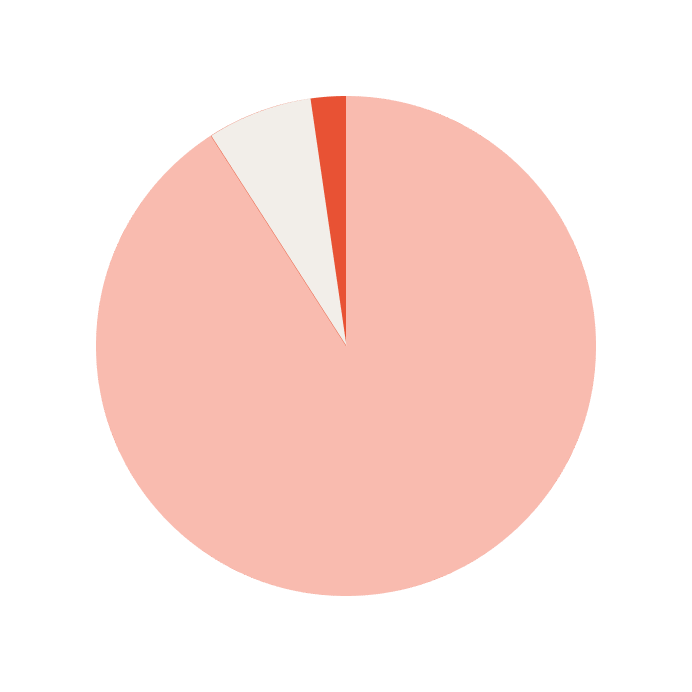Muse: Mood & Music Journaling App
This project presents an interactive mobile app that connects users' moods with music through journaling, visualizations, and personalized recommendations to promote emotional well-being and self-reflection.
Role: UX Researcher, UX Designer
Duration: 4 months
I set out to explore how people emotionally connect with music in their everyday lives...

36 of 45 survey participants identify between the ages of 18 and 24 years old.

40 of 44 survey participants indicate they listen to music daily.
Target Audience
The target audience is 18–34-year-old daily music listeners, like students, young professionals, and creatives, who value emotional well-being, mood awareness, journaling, and personal growth.
Key Challenges
Lack of Emotional Context in Music Applications
Traditional music apps overlook users' emotional states, resulting in mismatched recommendations, while research shows a clear user desire for mood-based personalization.
Fragmented Self-Reflection Tools
Current mood and journaling apps often lack integration with music and emotional visualization, and user research highlights the need for a more flexible, personalized solution that supports varied journaling styles and deeper reflection.
Research
Users struggled to understand and express their emotional states.
Survey Data
The survey was conducted as part of the initial research and planning phase to understand user needs, behaviors, and motivations regarding their emotional well-being, music listening habits, and interest in an application that integrates mood tracking with personalized music recommendations and journaling.
-
Users frequently associate specific songs or playlists with certain moods and intentionally listen to music to change or enhance their mood, with self-awareness, managing mental health, and identifying emotional patterns being the leading reasons for mood tracking.
- The most desired features for a mood journaling app include mood logging, personalized song recommendations, mood trend visualizations, and playlist creation based on emotions, often preferring a mix of structured prompts and free-text journaling.
- Additional valuable features suggested by users include seamless integration with all major music platforms (e.g., Spotify, Apple Music, YouTube), the ability to create and edit personalized playlists, and trend analysis for mood patterns.
Competitive Analysis
The competitive analysis evaluated existing journaling and music algorithm applications, such as Spotify Wrapped, Daylio, and Headspace, to identify their strengths and areas for improvement, derive key learnings, and inform the unique value propositions and essential features.
- Existing journaling applications like Mixtape, Infinite Journal, Eko, and Mood Meter offer strengths such as unique music-based concepts, distraction-free writing, narrative-driven reflection, and emotion-focused entries, but often face limitations like being niche, lacking multimedia support, or being too structured.
- Competitive music algorithm and mood-tracking apps such as Spotify Wrapped, Daylio, and Headspace provide engaging, data-driven insights into listening habits ("Personalized Data Visualizations"), simple quick mood inputs, and mindful music integration, yet they are often limited by yearly recaps rather than frequent insights, or by subscription models.
- The analysis indicates that the new app should prioritize personalized, data-driven insights ("Gamify user insights"), emotional and mood-based features that integrate music for mindfulness, and innovative journaling methods including music as "Memory Triggers".
Secondary Research
The literary analysis synthesized existing research on music therapy and emotional well-being, mood tracking and interaction design, case studies of mood-based music applications, and music recommendation systems to understand foundational principles, identify design opportunities, and inform the unique value propositions and essential features for the new Music & Mood Journal app.
- Music therapy is a powerful tool for improving mental health, decreasing symptoms of depression and anxiety, and enhancing emotional expression and mental relaxation through non-invasive interventions, with studies showing "visible improvement in mental health".
- Effective mood tracking applications necessitate a user-centered design approach with intuitive interfaces and strong emphasis on personalization and data privacy and security, while also addressing challenges in user engagement and retention.
- Both case studies and advanced music recommendation systems like Deezer's Flow Moods and new AI models highlight the critical importance of integrating emotional context and real-time mood detection to generate personalized, mood-specific music recommendations and playlists, which significantly enhances user experience and emotional regulation.
Emily Tran is an ideal design persona because she perfectly embodies the target audience for the app: young adults who actively listen to music and are interested in tracking and improving their mental well-being.
Ideate
I built the first flows, visual language, and interactions that allowed users to see and hear themselves more clearly.
These early wireframes outline the core user flow of a mood-based journaling app that pairs emotions with music. From tracking feelings to receiving AI-curated song recommendations, users can log entries through text, voice, or prompts.
“I think it’s really cool! I think you should include more ways to journal, like maybe with stickers, emojis, or even a drawing tool. Also, a backspace or delete option would be super helpful.”
Prototype
Through feedback and iteration, the app became a space of self-reflection.
Features
Mood Logging with Music Pairing
This core feature enables users to log their daily moods and directly associate them with specific songs or playlists. It's useful because it creates a direct, tangible link between a user's emotional state and their musical choices, facilitating self-awareness and personalized emotional understanding.
Mood Visualizations and Trends
The app generates visual "mood maps" over time, displaying color-coded mood shifts and a "Music-Mood 'aura'". This feature is useful for users to visually track their emotional journey, identify patterns in their moods, and gain clarity on how music influences their mental state, resembling Spotify Wrapped's "Your Audio Aura".
Smart, AI-Powered Music Recommendations
Leveraging AI, the app suggests personalized songs and playlists based on the user's mood trends. This is incredibly useful as it overcomes the limitation of generic recommendations, offering music that genuinely resonates with the user's current emotional state and helping them discover new music that can enhance or influence their feelings.
These high-fidelity prototypes bring the mood and music journal to life with a calming, pastel UI and smooth emotional flow. Muse is designed to help users like Emily reflect, feel seen, and find sonic comfort. Each screen gently guides the user through personalized emotional experiences, making mood tracking not just helpful, but beautiful, intuitive, and deeply personal.
Evaluate
I listened to the user, lessons learned, voices valued, and where the next step begins.
Conclusion
The Music & Mood Journal app is designed to fill a critical gap in personal well-being tools by seamlessly integrating mood tracking with music discovery and reflective journaling. By combining emotional design, user-centered principles, and intelligent recommendations, the app aims to empower users to gain deeper self-awareness, proactively manage their emotional well-being, and discover music that truly enhances their daily emotional landscape.
Insights
Integration is Crucial for a Seamless User Experience
A key learning is that users desire a cohesive and integrated experience across different aspects of their digital lives, especially when dealing with personal data like mood and media consumption.
Emotional Context and Hyper-Personalization Drive Deeper Engagement
The project revealed that traditional music recommendation systems often fall short because they "disregard the emotional context, relying predominantly on past listening behavior".
Visualizing Abstract Data Enhances Self-Awareness and User Engagement
The project learned that interactive mood visualizations, such as color-coded mood maps and "music-mood aura," are highly effective in making abstract emotional data tangible and understandable over time.
Flexibility in Interaction Methods is Essential for User Adoption and Consistency
This flexibility caters to different user preferences and situations, making journaling more convenient and accessible, thus improving adherence to self-reflection practices.
Thoughtful Gamification and Gentle Nudges Foster Habit Formation for Well-being Apps
These gentle prompts, like "It’s been 3 days since your last journal entry. Do you want to check in with a song?", address user pain points around maintaining habits and transform the app into a "stress-free way to check in with your emotions".
Designing for Mental Well-being Requires Sensitivity and a Non-Clinical Approach
The project's target audience, young adults interested in mental well-being, often found existing mood-tracking apps "either too clinical or lacking personalization".